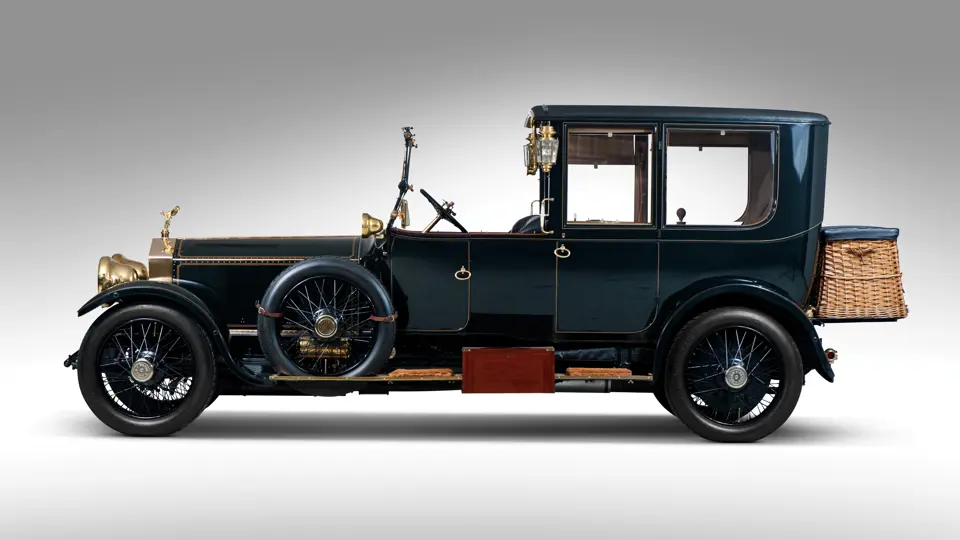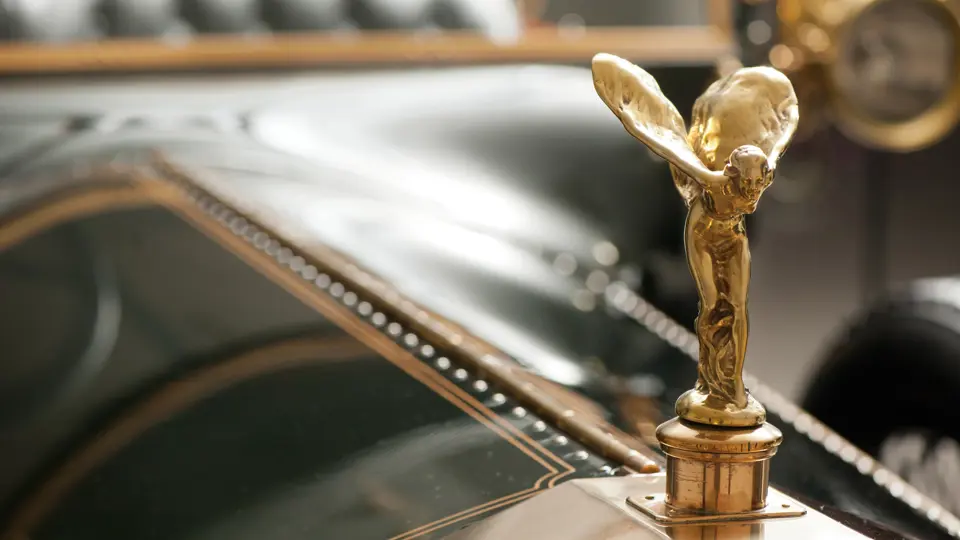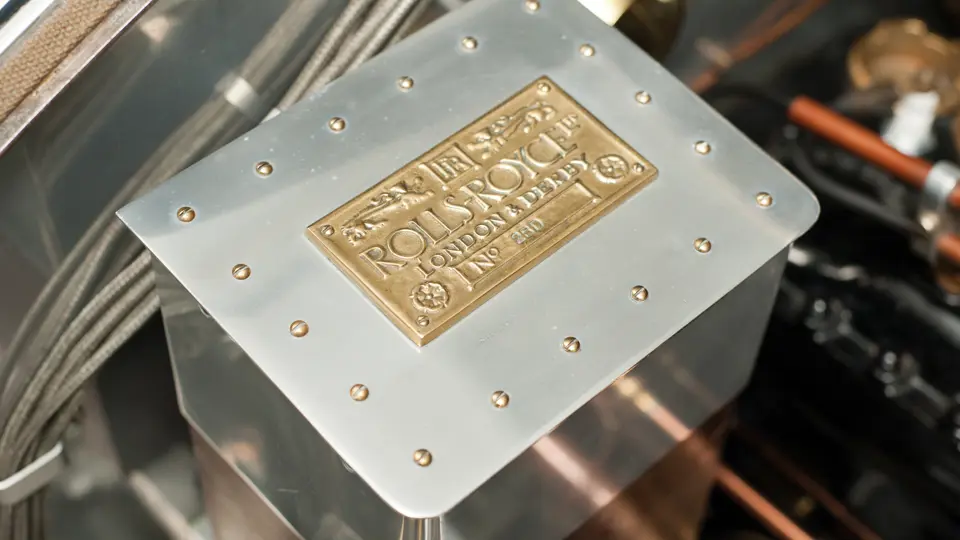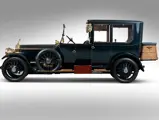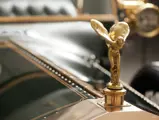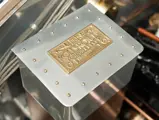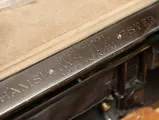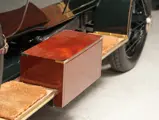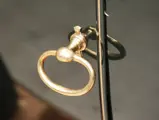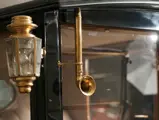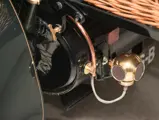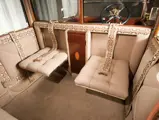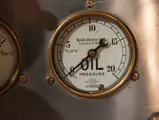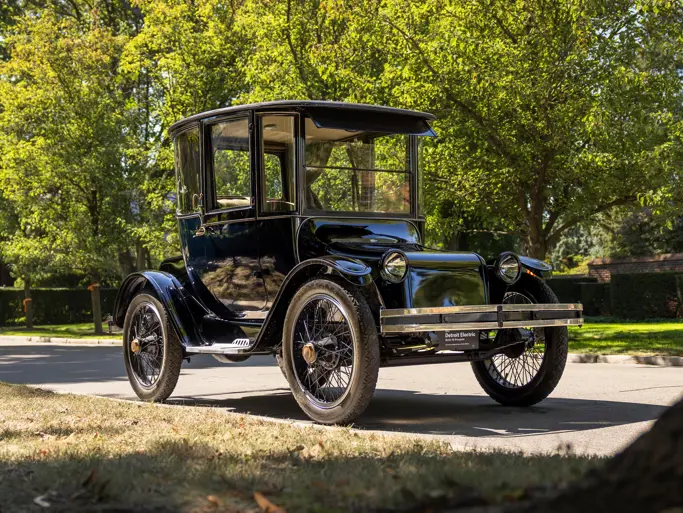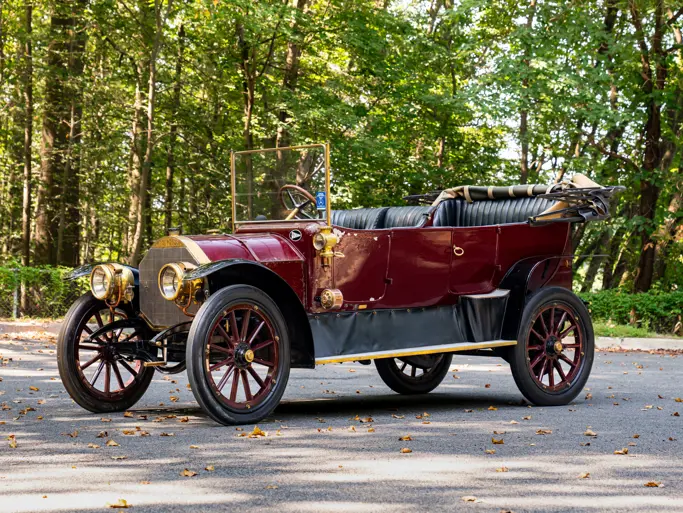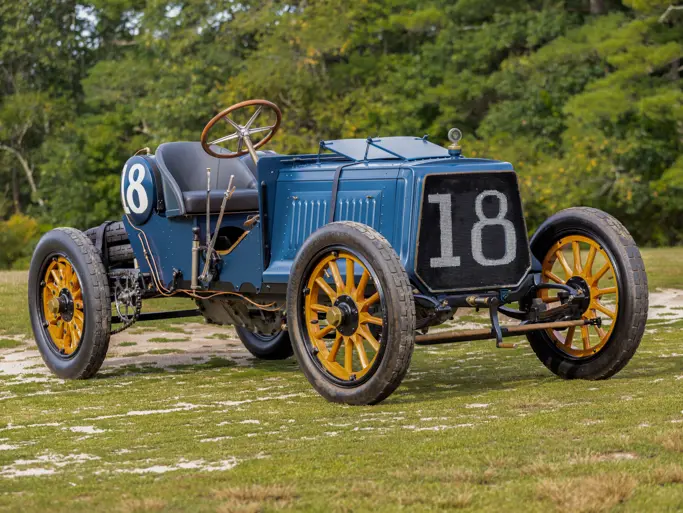50 bhp, 7,428 cc L-head inline six-cylinder engine, four-speed manual gearbox with direct-drive fourth gear, worm-and-nut steering, foot-operated brakes with rear drums, live front axle with semi-elliptic leaf springs, and live rear axle with cantilever leaf springs. Wheelbase: 138"
• One of approximately five Rolls-Royces bodied by H.A. Hamshaw Ltd.
• Ex-duPont family, A. Atwater Kent Jr., and Richard Solove
• Original chassis, engine, and coachwork
• Offered from the Estate of John O’Quinn
H.A. Hamshaw Ltd. and the Silver Ghost
H.A. Hamshaw, of Leicester in the U.K., had its origins in the mid-19th century when the firm of Parr & Hamshaw was first established. In about 1880, Harry Hamshaw bought out his partner and went on to create a business of building prestigious carriages. During the early-1900s, the firm began both selling and bodying cars, exhibiting their work at the Olympia motor shows from 1919 to 1928. Hamshaw primarily exhibited cars for which it held agencies: Wolseley, Vauxhall, Humber, and Sunbeam. Most interesting are the five or so Rolls-Royces, including this car, that the firm is known to have bodied.
Late in 1906, the 40/50 hp model was introduced at the London Motor Show on the stand of C.S. Rolls and Company. The new model was destined to achieve a status few automobiles would ever equal in the history of motor vehicles. The Silver Ghost, as it later became known, swiftly established Rolls-Royce as the ultimate in luxury motoring—so much so that the company rightfully touted every vehicle as “The Best Car in the World.” Silver Ghost production continued for 18 years, totaling nearly 8,000 cars, with 6,173 built in England, plus 1,703 Springfield models. This included the staff cars and armor-plated combat versions that saw service during WWI.
Chassis 2BD
Due to the war effort, the supply of Rolls-Royces available to the public became limited. During the summer of 1914, Rolls-Royce became entrenched in the production of aircraft engines, and the building of automobiles for civilian purchase came to a virtual standstill. Documented in John Fasal’s definitive book, The Edwardian Rolls-Royce, chassis 2BD’s first owner was Captain H. Whitworth, of Beverley, Yorkshire, UK. His Silver Ghost had been delivered to Hamshaw in 1915 to be clothed following testing at Rolls-Royce. The next owner of record was the duPont family, via Rolls-Royce distributor Robert W. Schuette. The early history that has long been associated with this car entails Mr. Alfred I. duPont, whose second wife Alicia wanted a new Rolls-Royce limousine. Mr. duPont, as scion of the family business, supplied large quantities of quality gunpowder to the British military. King George V, well aware of the duPont family support, saw to it that a suitable car was made available to them as a show of gratitude to the family. The Silver Ghost was received at the family estate in Wilmington, Delaware. At the time, the duPonts were among America’s wealthiest families. Alfred was a graduate of Phillips-Andover and the prestigious Massachusetts Institute of Technology, before joining the family business as a director.
DuPont passed away in 1935, 15 years after Alicia. The next owner of 2BD was A. Atwater Kent Jr., a prominent Philadelphian whose father founded the famed manufacturing company heavily involved in radios and electronics. It was also later owned by well-known Rolls-Royce collector James C. Leake, of Oklahoma, in the early-1980s. The car then spent time abroad, back in the UK in the collections of Sam Macdonald-Hall, of Essex, and Terry Cohn, of Churt, Surrey. It returned to the United States in 1993 to become part of the noted Richard Solove Collection in New Albany, Ohio. Prior to its return to the United States, Solove had the vehicle meticulously and sympathetically restored by David Hemmings while it was still in England. The car has been most recently part of the collection of the late Mr. John O’Quinn.
2BD is nothing short of opulent. It is replete with the finest workmanship typical of expert carriage builders of the era. Fittings are brass rather than nickel, and the dark, almost black, olive exterior is beautifully detailed with gold pinstriping. Six painted wire wheels, including dual spares with brass hubs and a handsome wicker trunk, are provided. Inside are carved ivory door handles, beveled glass windows, cut crystal lamps, an inlaid wood folding table, two jump seats, and door pockets. Communications to the chauffeur are via a tubular intercom. The chauffeur’s compartment is upholstered in button-tufted black leather, while the passenger compartment is lavish in beige cloth with embroidered silk window pulls and trim-work, including rear compartment shades and sliding divider. Perhaps most notable is the elegant, pleated, cloth rosette headliner with its cloudlike billows. C.A.V. lighting, a triple Elliot speedometer, and a set of leather-wrapped flasks in the right rear armrest add to the exquisite details of this magnificent machine. This is, without question, one of the most outstanding examples of an early Rolls-Royce extant today. Believed to remain in its original configuration as built new, including its chassis, running gear, and coachwork, the stunning and rare body by Hamshaw shows that the firm was as capable of building formal bodies just as luxurious as its more prolific competition.

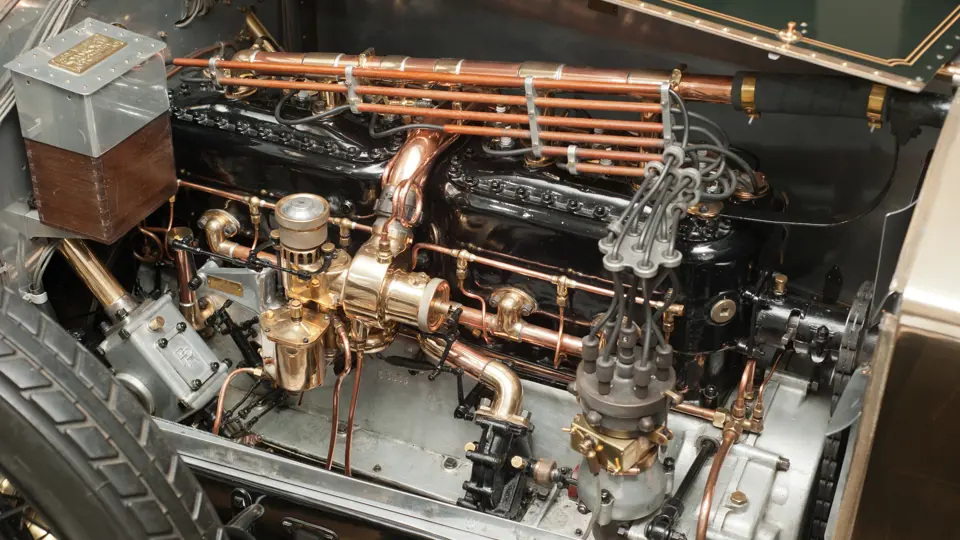


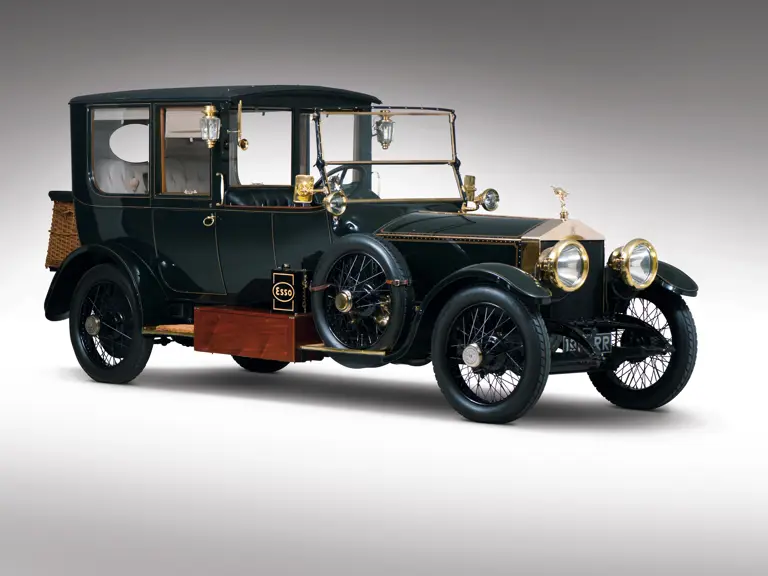
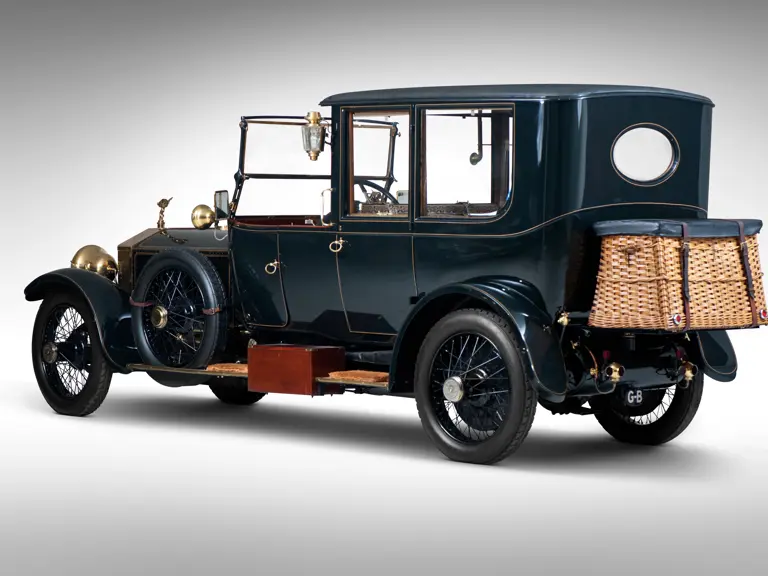
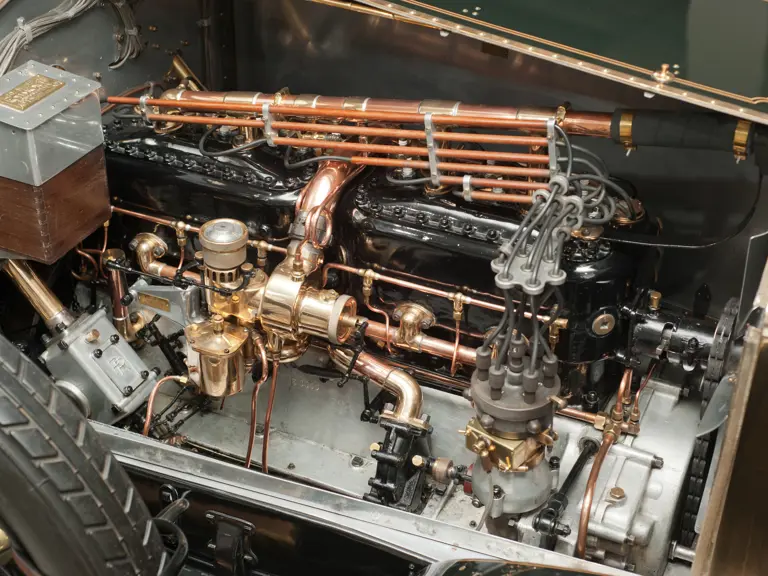
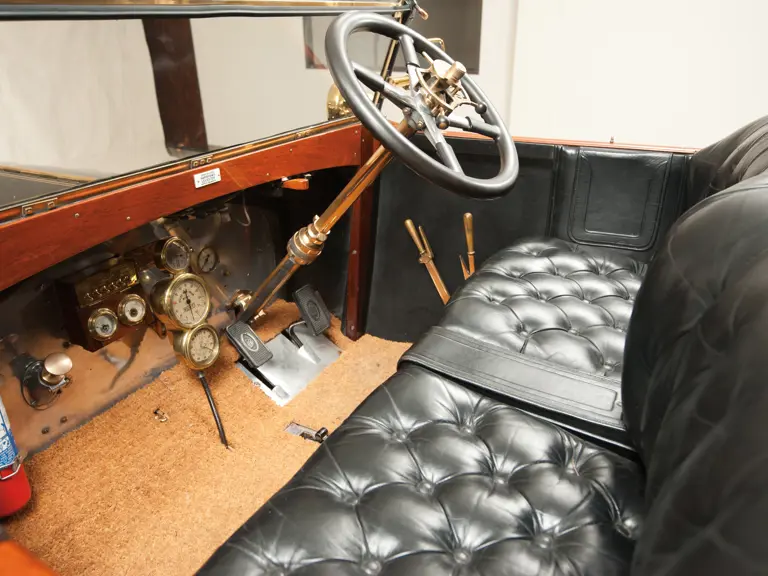
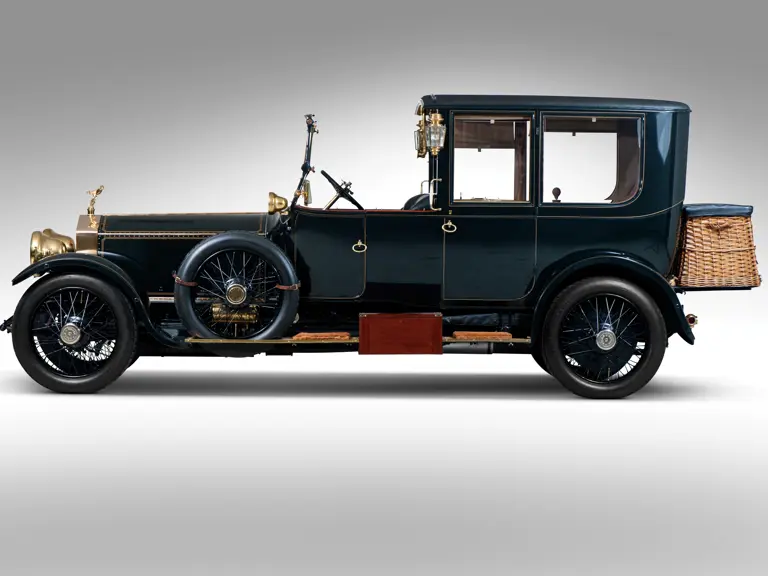
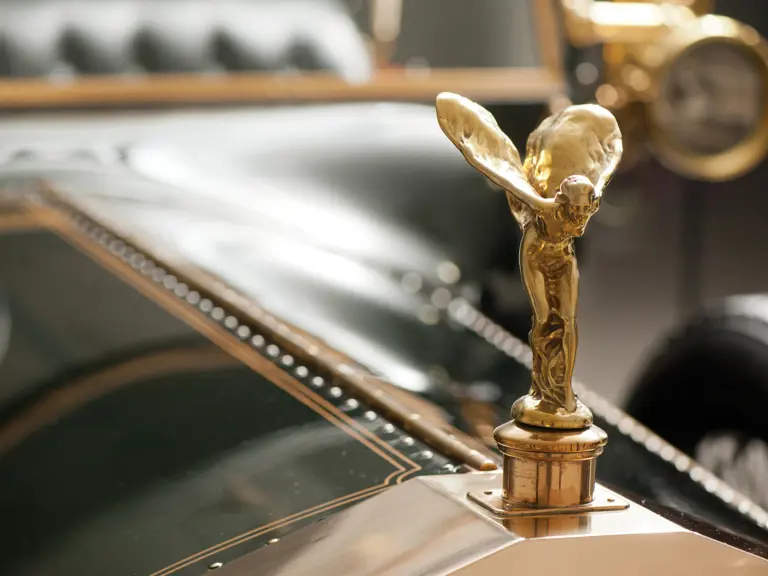
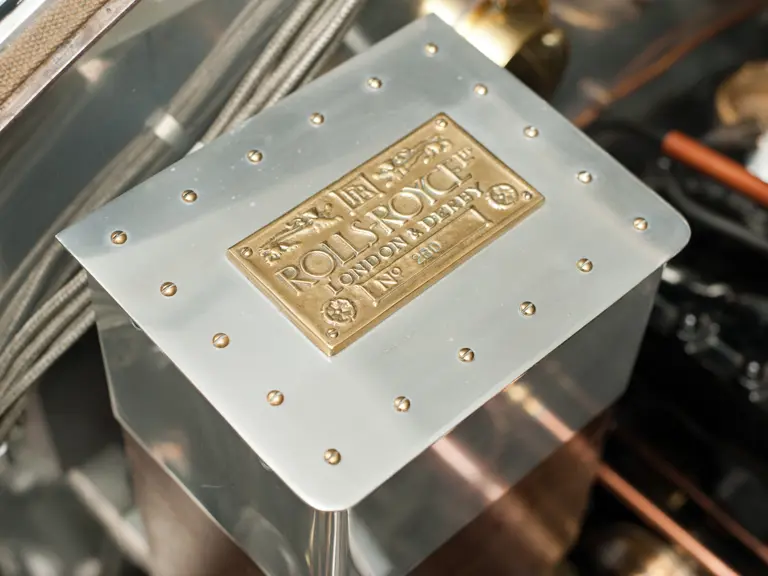
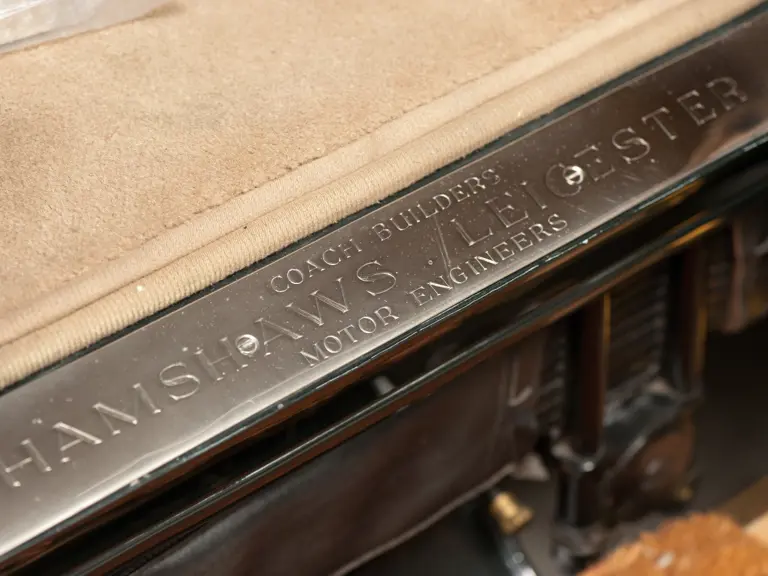
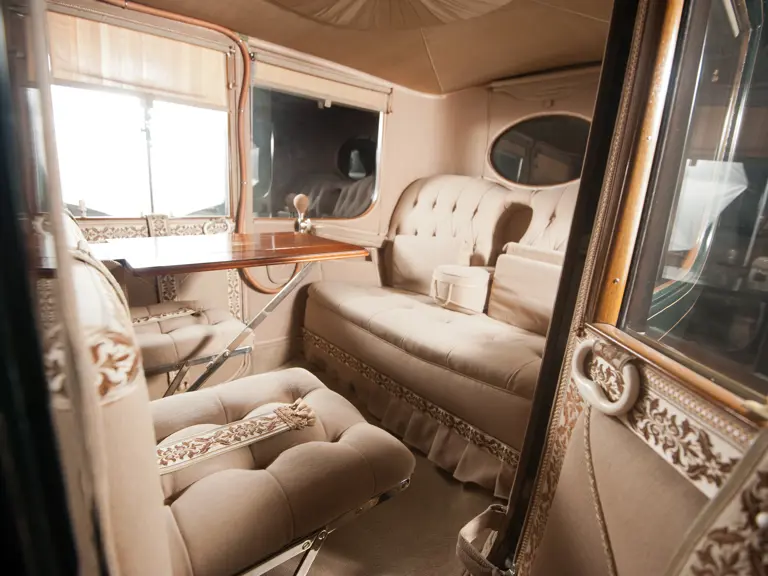
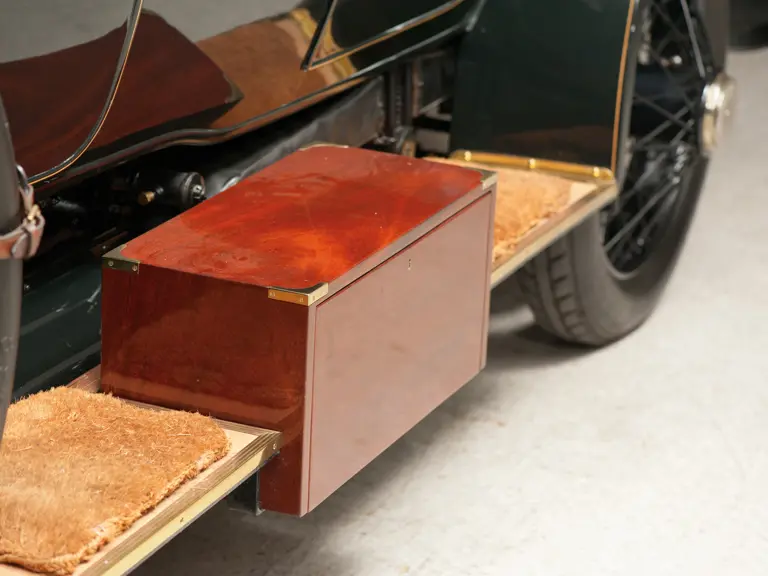
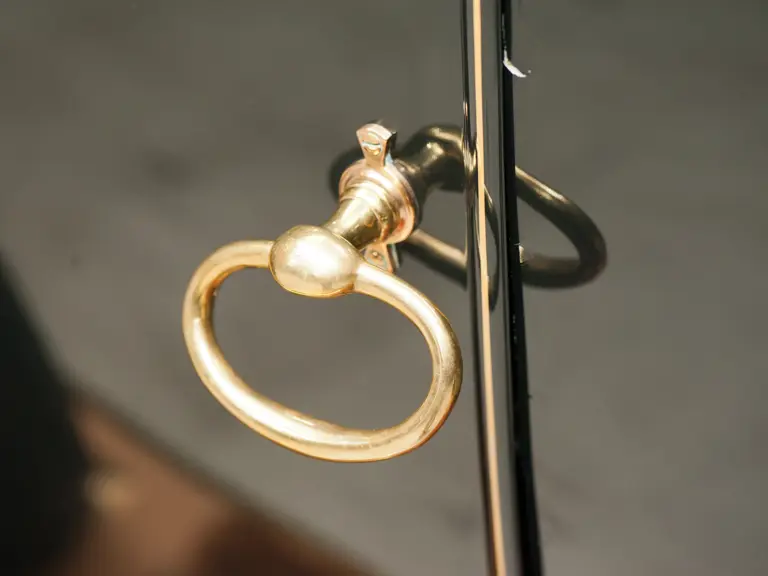
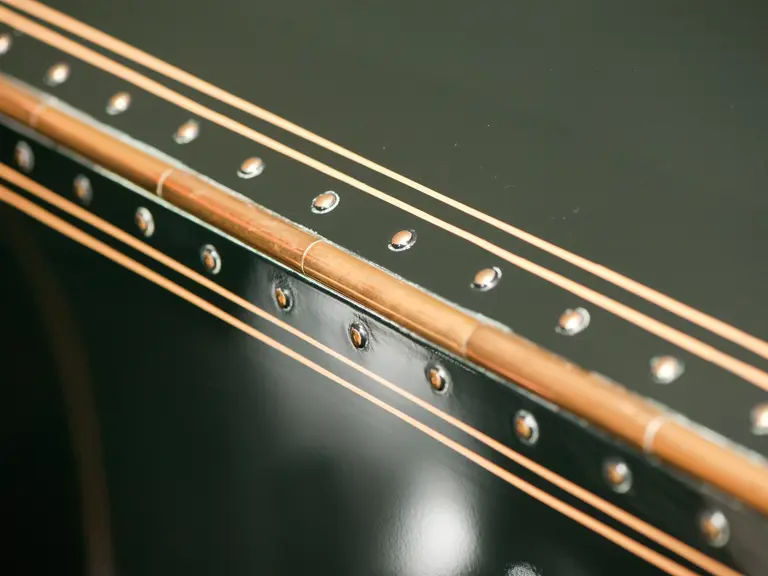
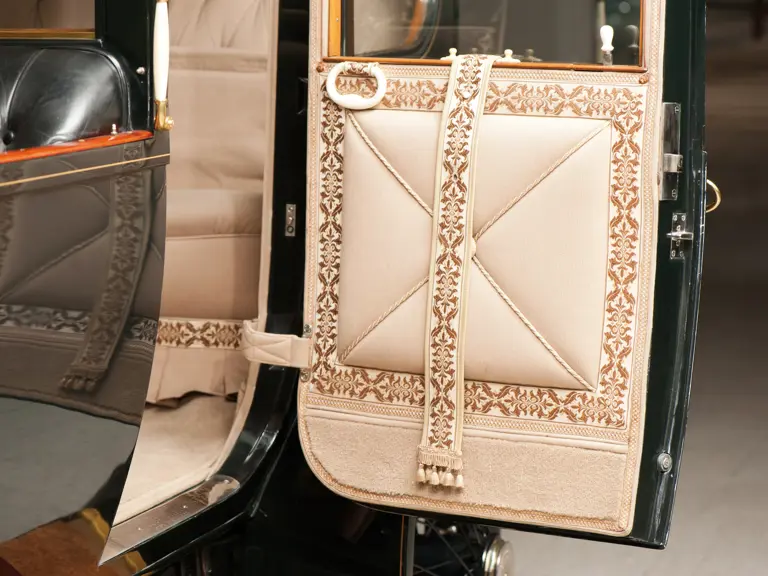

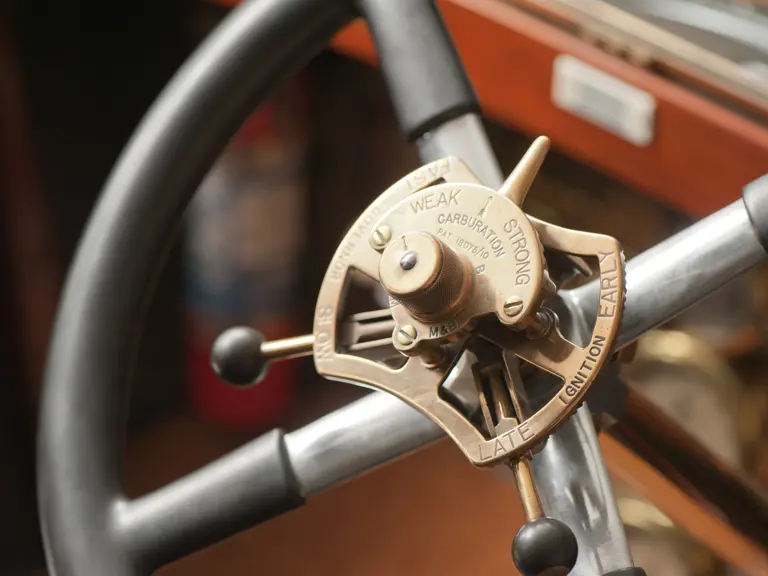

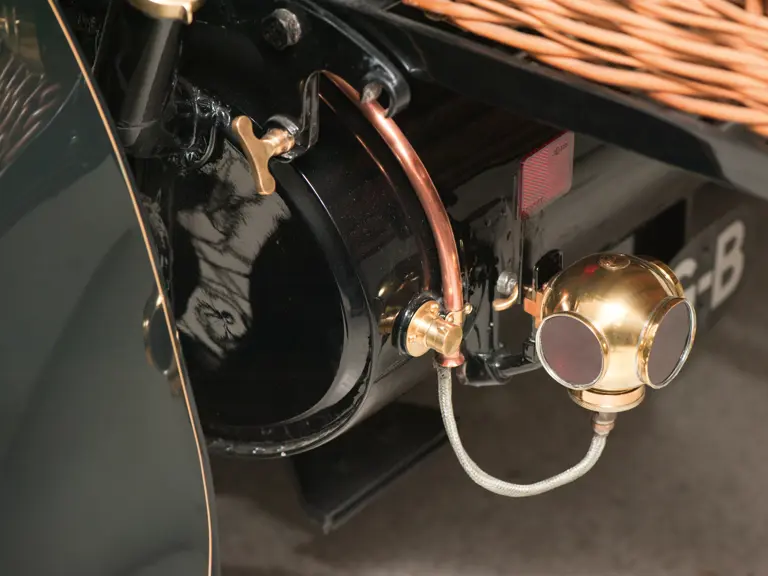
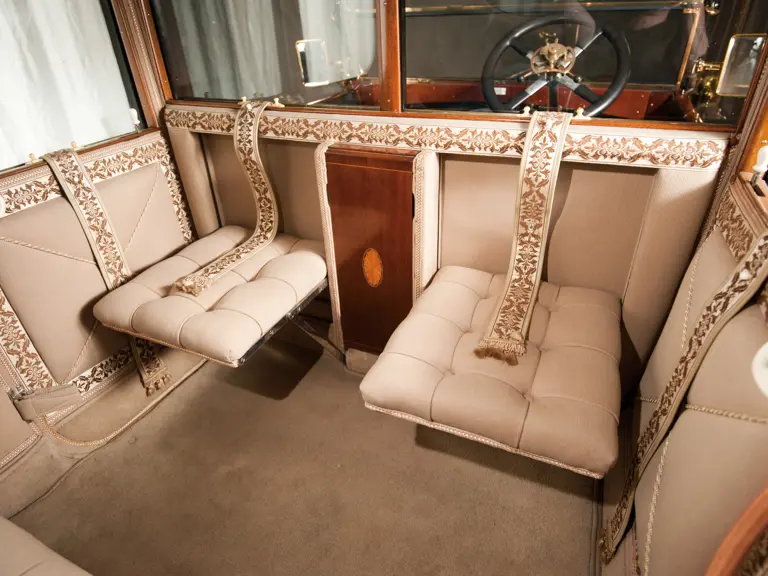
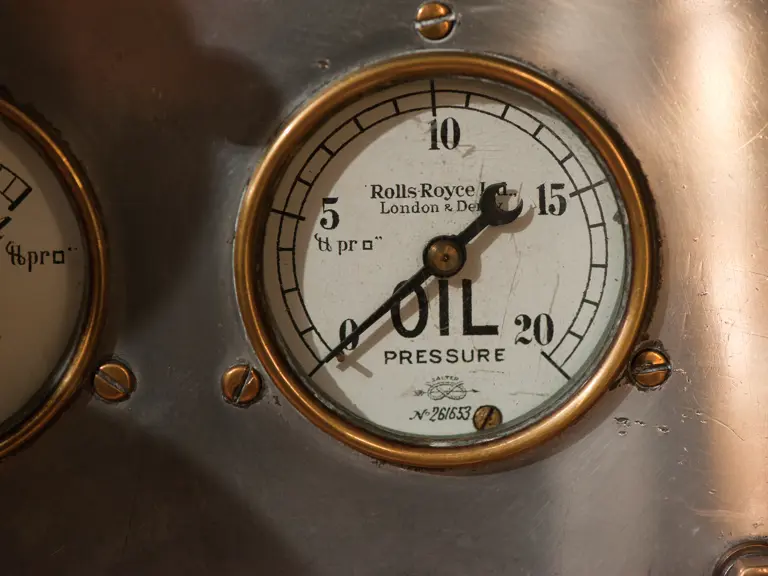
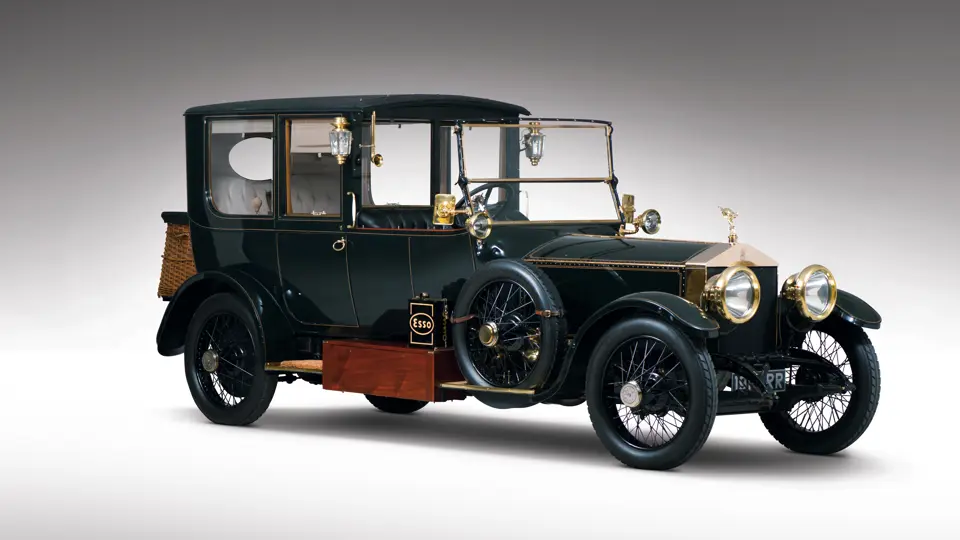
 | Monterey, California
| Monterey, California
